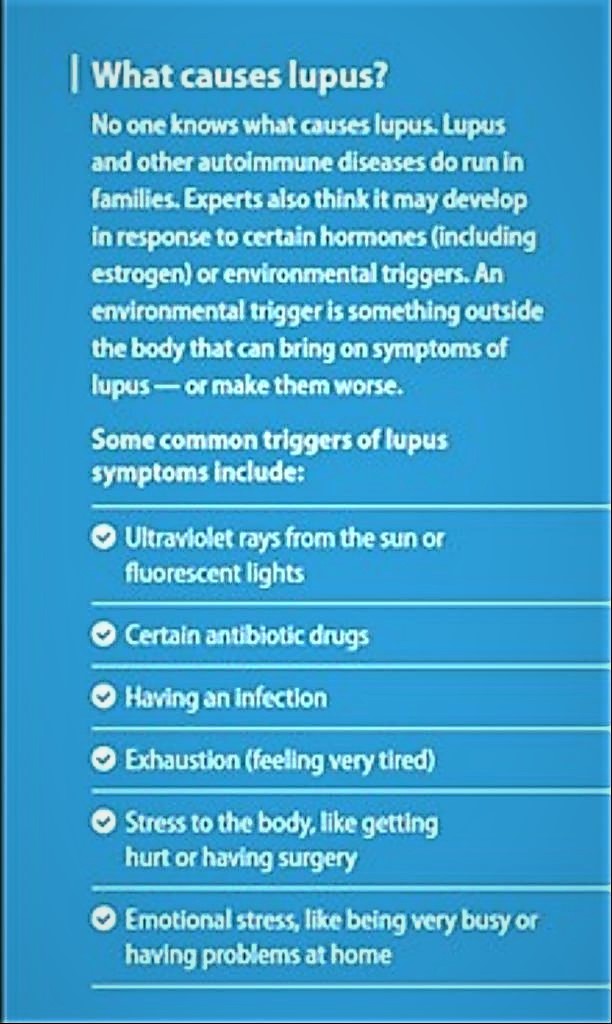Who is affected by lupus?
Although lupus can affect anybody, 90% of lupus patients are women. Of these, 90% develop the condition during their reproductive years.
Lupus affects people the world over, although there is a higher incidence in certain regions of the world and in certain ethnic groups. For example, in the United States, African Americans, Latinos and Asians are more commonly affected than Caucasians. Lupus is more common in the Philippines and China than in Japan.
Lupus in different groups
- Children
- Although lupus is most common in young women, it is not unheard of in children. Most children are diagnosed around puberty, although there are rare cases in children younger than 5 years. Symptoms in childhood lupus are very similar to adult lupus although they are usually more serious. For this reason, children are generally given more aggressive treatment that aims to control the disease before it involves major organs.
- Men
- Lupus is much more rare in men than women (occurring at a rate of approximately one man for every nine women) but does occur. Unlike women, who tend to develop the disease between the ages of 15 and 45 years, there is no distinct “risk period” where men are more likely to present with lupus. Men tend to experience slightly different symptoms that are often more severe than in women.
- Older age groups
- Few people develop lupus in old age and it is generally a much milder disease. Those who have had lupus for some time will usually find that their lupus calms down, with only a few symptoms such as photosensitivity and joint pain persisting.
The History of lupus
Lupus was first described way back in the time of Hippocrates in Ancient Greece.
The word “Lupus” means “wolf” in Latin. There are at least two explanations why the word “lupus” was chosen to describe the disease we now know formally as systemic lupus erythematosus.
One explanation is that lupus was so named because the common butterfly rash seen on the cheeks and nose of many lupus patients is similar to the facial markings of a wolf. An alternative explanation relates to the early use of the word “lupus” to describe skin ulcers. In the sixteenth century, certain skin ulcers were compared to a hungry wolf eating the sufferer’s flesh.
In the 1800s doctors named another disease involving skin lesions “lupus erythematosus”. These lesions were not ulcers but rather were red regions where the skin was thinner than normal.
When doctors discovered that a bacterium was responsible for many of the skin ulcers that were called lupus and that these ulcers cleared up with antibiotic treatment, they realised that lupus erythematosus was a separate condition. It was not until 1872 that doctors realised lupus erythematosus affected parts of the body other than the skin. The condition was given the name lupus erythematosus disseminatus, and the first of the symptoms were documented.


